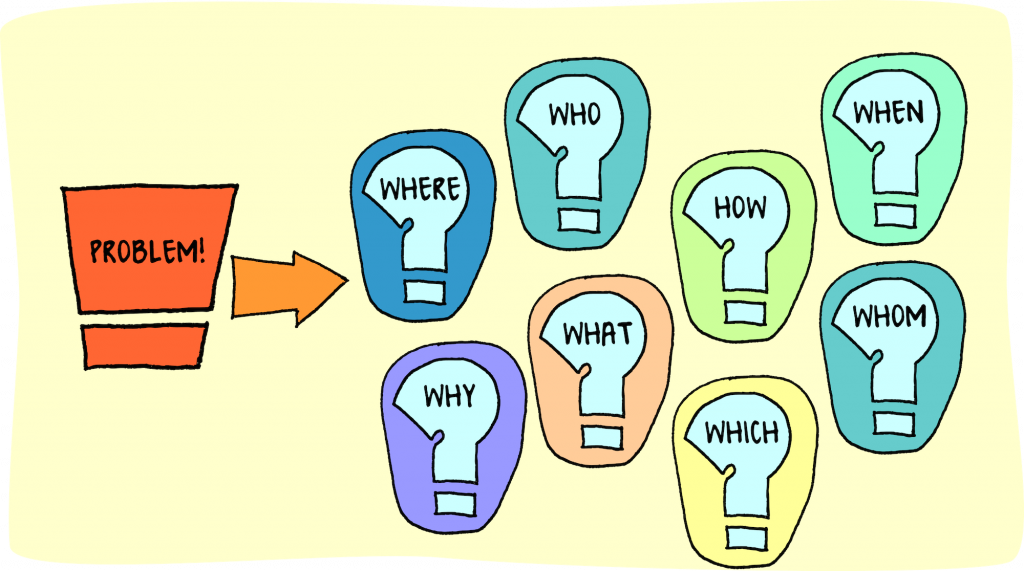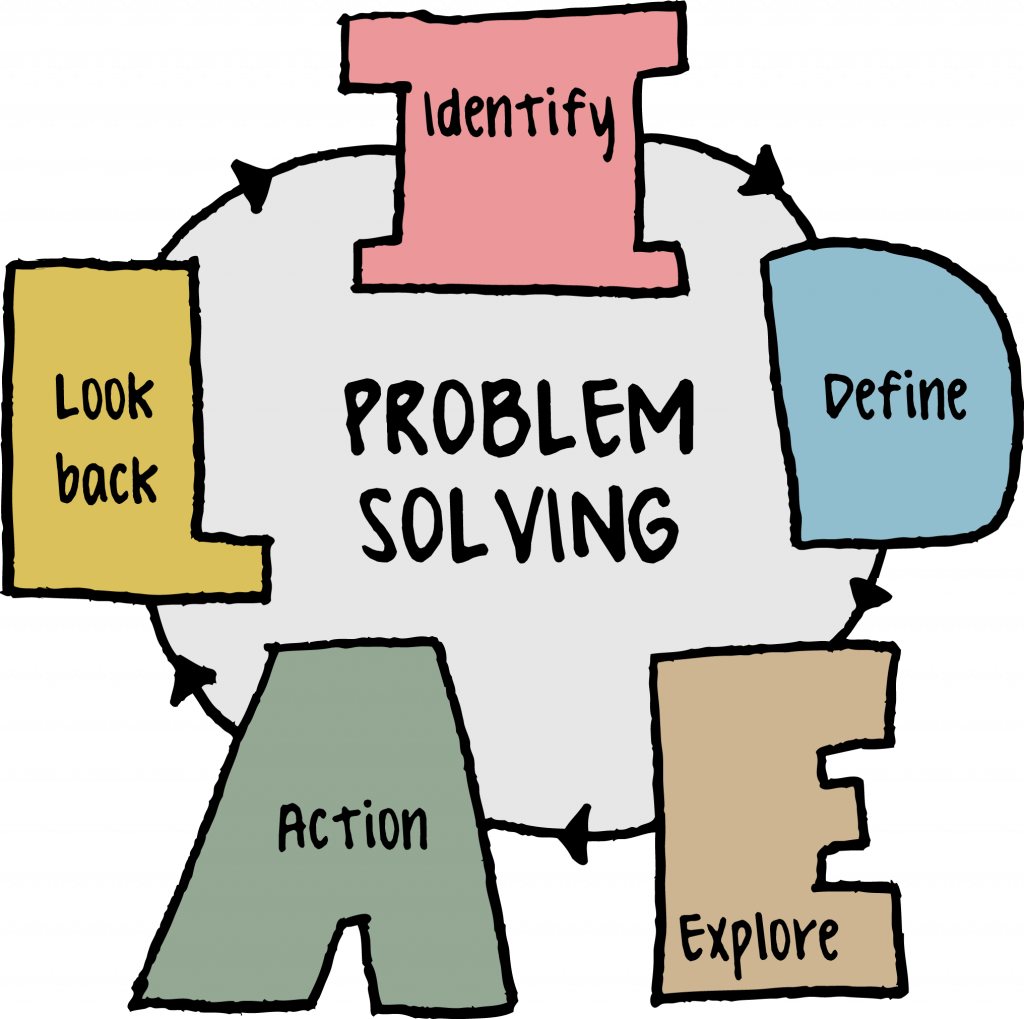Problem Solving
 Figure 9.1: Defining a Problem
Figure 9.1: Defining a Problem
The ability to solve problems is a basic life skill and is essential to our day-to-day lives, at home, at school, and at work. We solve problems every day without really thinking about how we solve them. For example: it’s raining and you need to go to the store. What do you do? There are lots of possible solutions. Take your umbrella and walk. If you don’t want to get wet, you can drive, or take the bus. You might decide to call a friend for a ride, or you might decide to go to the store another day. There is no right way to solve this problem and different people will solve it differently. Problem solving is the process of identifying a problem, developing possible solution paths, and taking the appropriate course of action.
Why is problem solving important? Good problem solving skills empower you not only in your personal life but are critical in your professional life. In the current fast-changing global economy, employers often identify everyday problem solving as crucial to the success of their organizations. For employees, problem solving can be used to develop practical and creative solutions, and to show independence and initiative to employers.
what does problem solving look like?
The ability to solve problems is a skill at which you can improve. So how exactly do you practice problem solving? Learning about different problem solving strategies and when to use them will give you a good start. Problem solving is a process. Most strategies provide steps that help you identify the problem and choose the best solution. There are two basic types of strategies: algorithmic and heuristic.
Algorithmic strategies are traditional step-by-step guides to solving problems. They are great for solving math problems (in algebra: multiply and divide, then add or subtract) or for helping us remember the correct order of things (a mnemonic such as “Spring Forward, Fall Back” to remember which way the clock changes for daylight saving time, or “Righty Tighty, Lefty Loosey” to remember what direction to turn bolts and screws). Algorithms are best when there is a single path to the correct solution.
But what do you do when there is no single solution for your problem? Heuristic methods are general guides used to identify possible solutions. A popular one that is easy to remember is IDEAL [Bransford & Stein[1]] :

Figure 9.2: The IDEAL Problem Solving Process
IDEAL is just one problem solving strategy. Building a toolbox of problem solving strategies will improve your problem solving skills. With practice, you will be able to recognize and use multiple strategies to solve complex problems.
References
- Bransford, J. & Stein, B.S. (). The Ideal Problem Solver: A Guide For Improving Thinking, Learning, And Creativity . New York, NY: W.H. Freeman. ↵
Attribution
This chapter is an adaptation of Chapter 3: What is Problem Solving by Bonnie Boardman and is licensed under a Creative Commons Attribution 4.0 International License, except where otherwise noted. You can download this book free at Introduction to Industrial Engineering Copyright © 2020.

